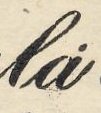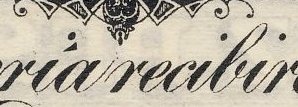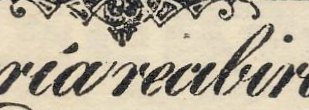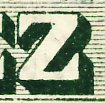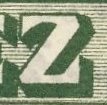Counterfeit $10 notes
On 15 June 1915 Luis Pruneda, the Inspector at the government printing works, reported that they knew of two types of counterfeit $10 Monclova notesCEHM, Fondo XX1, carpeta 43, legajo 4641. However, bogus $10 notes had been mentioned in the Cinco de Mayo affairTucson Daily Citizen, 8 March 1914.
| GENUINE | COUNTERFEIT |
|---|---|
| signatures lithoprinted | |
| smaller sized numerals in corners |
and in the October 1914 newspaper report from Mexico CityEl Pueblo, Año I, Tomo I, Núm. 29, 29 October 1914
| GENUINE | COUNTERFEIT |
|---|---|
| signature smaller |
Counterfeit $10 notes - Type 1
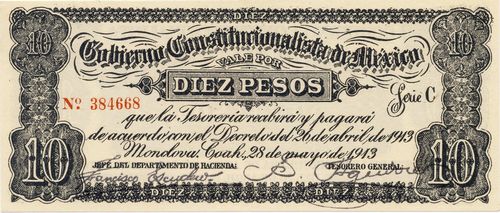
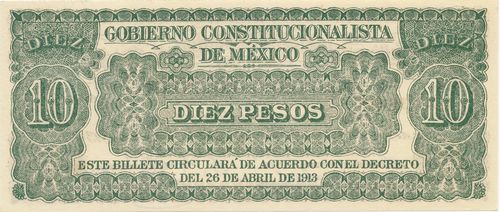
| GENUINE | COUNTERFEIT |
|---|---|
| very heavy print | |
|
|
dot over 'la' |
|
|
|
|
|
no crossbar on 't' of 'Decreto' |
Counterfeit $10 notes - Type 2

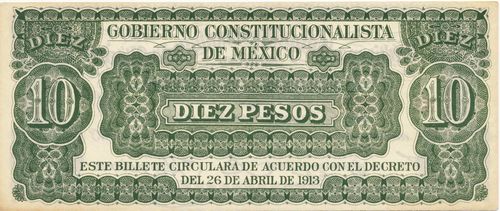
In another notice the indication of counterfeit $10 notes were as follows:
| GENUINE | COUNTERFEIT |
|---|---|
| The accent of the ‘é’ of ‘México’ is shorter and wider | |
| The numbering is totally uniform and clear | Numbering is imperfect and smudged |
|
The dots of the 'i's in 'que la Tesorería recibirá y pagará de acuerdo con el Decreto del 26 de abril de 1913' are further from the letters |
The dots are very near the letters |
| The second '1' of '1913' is separate from '9' | '1' is joined to '9' |
| The ends of the bars of the ‘Z’ of ‘DIEZ’ are cut diagonally | Ends are cut vertically |
| On the back the accent of 'É' of 'MÉXICO' has a little line or shadow under it | No shadow |
| On the back predominately white tones | green tones, and impression very imperfect and smudged |
|
on the back the ends of the bars of the ‘Z’ of ‘DIEZ’ are cut vertically |
Ends are cut diagonally |


